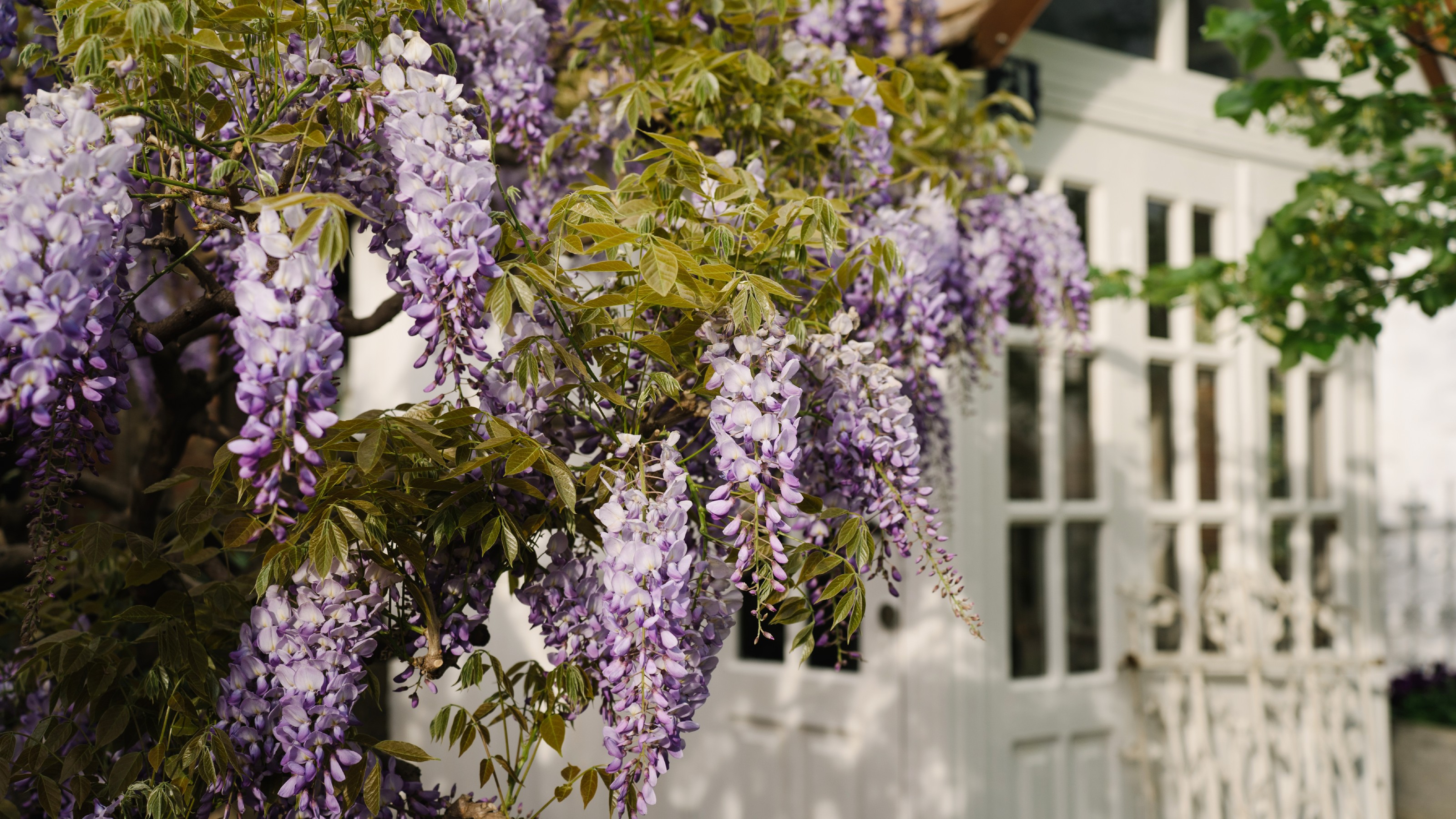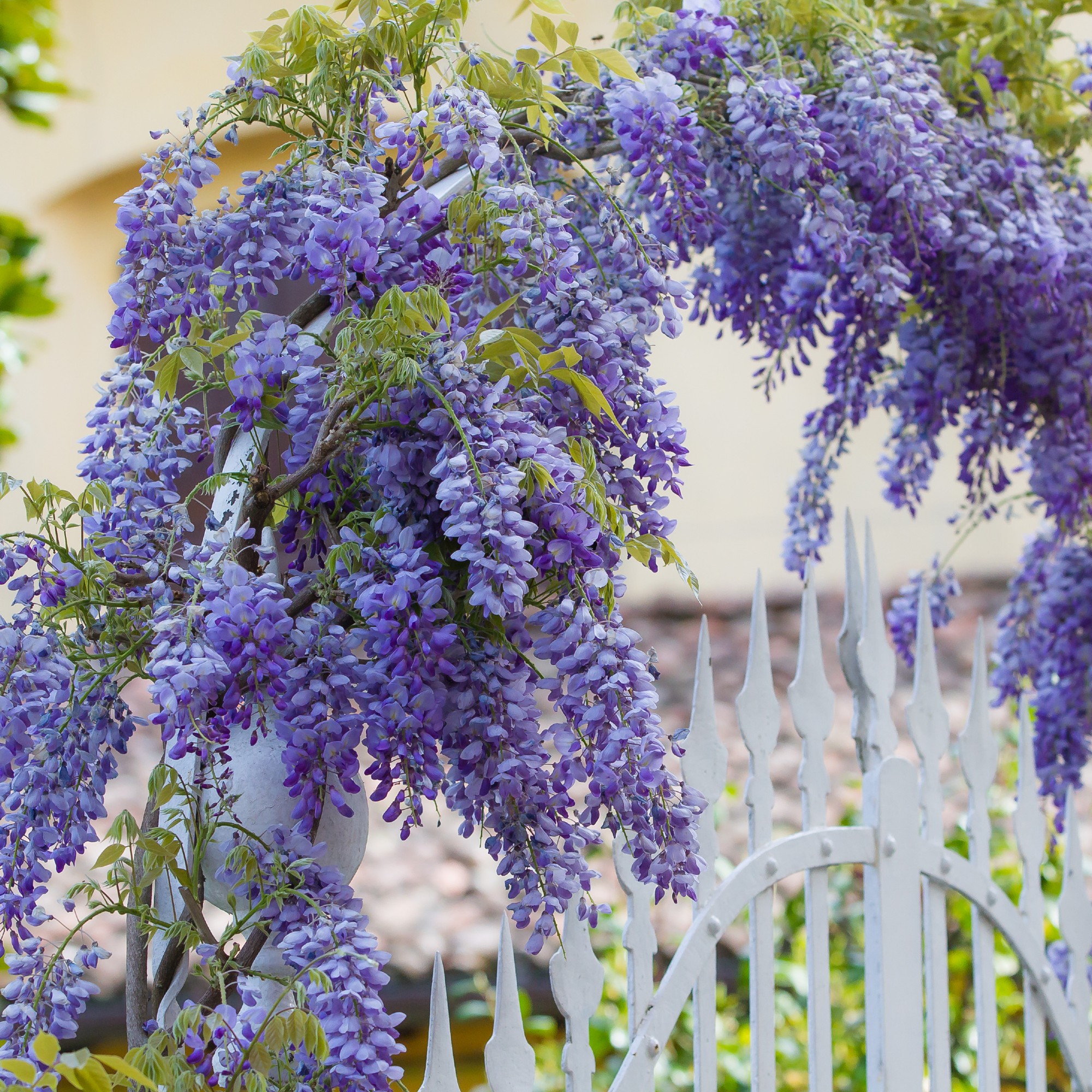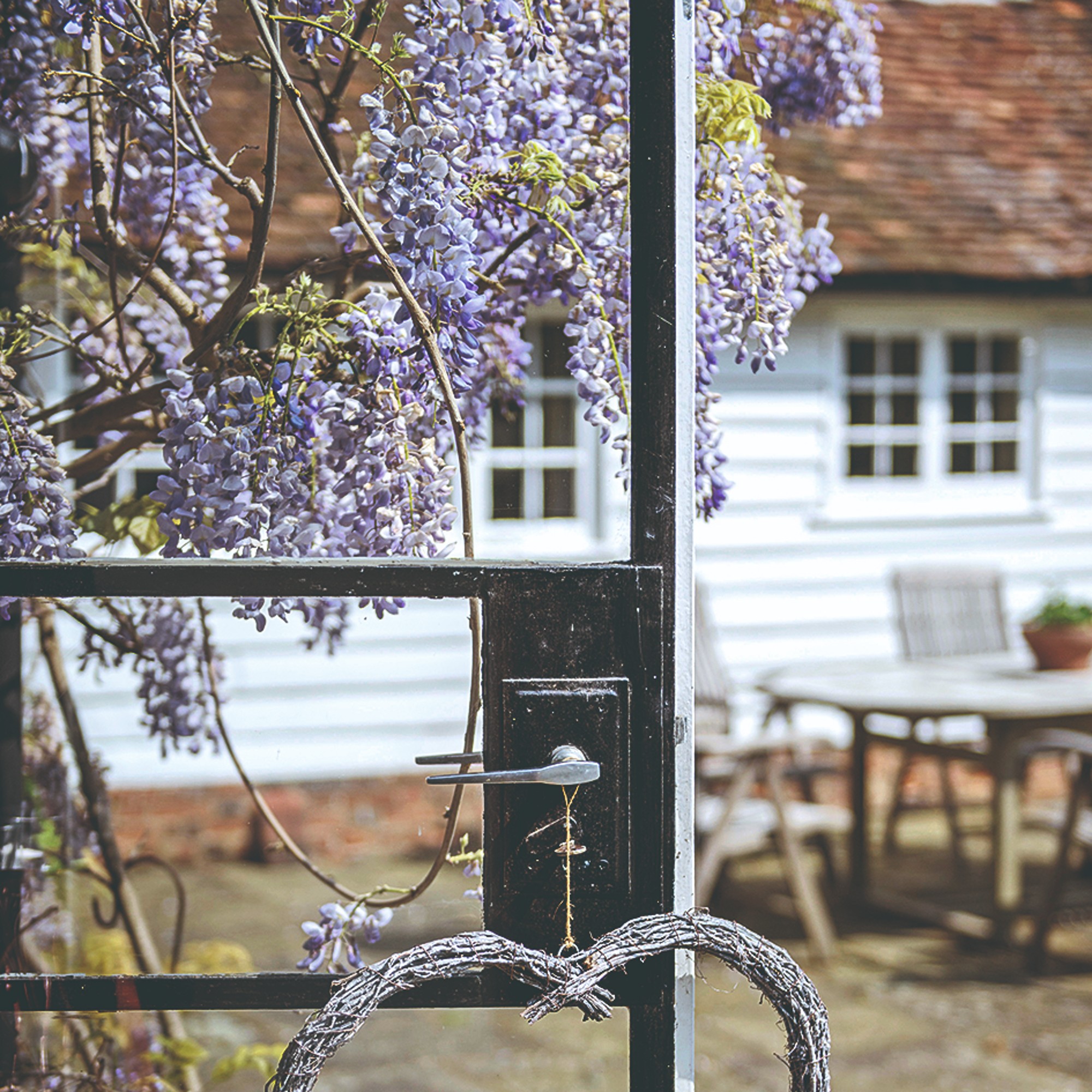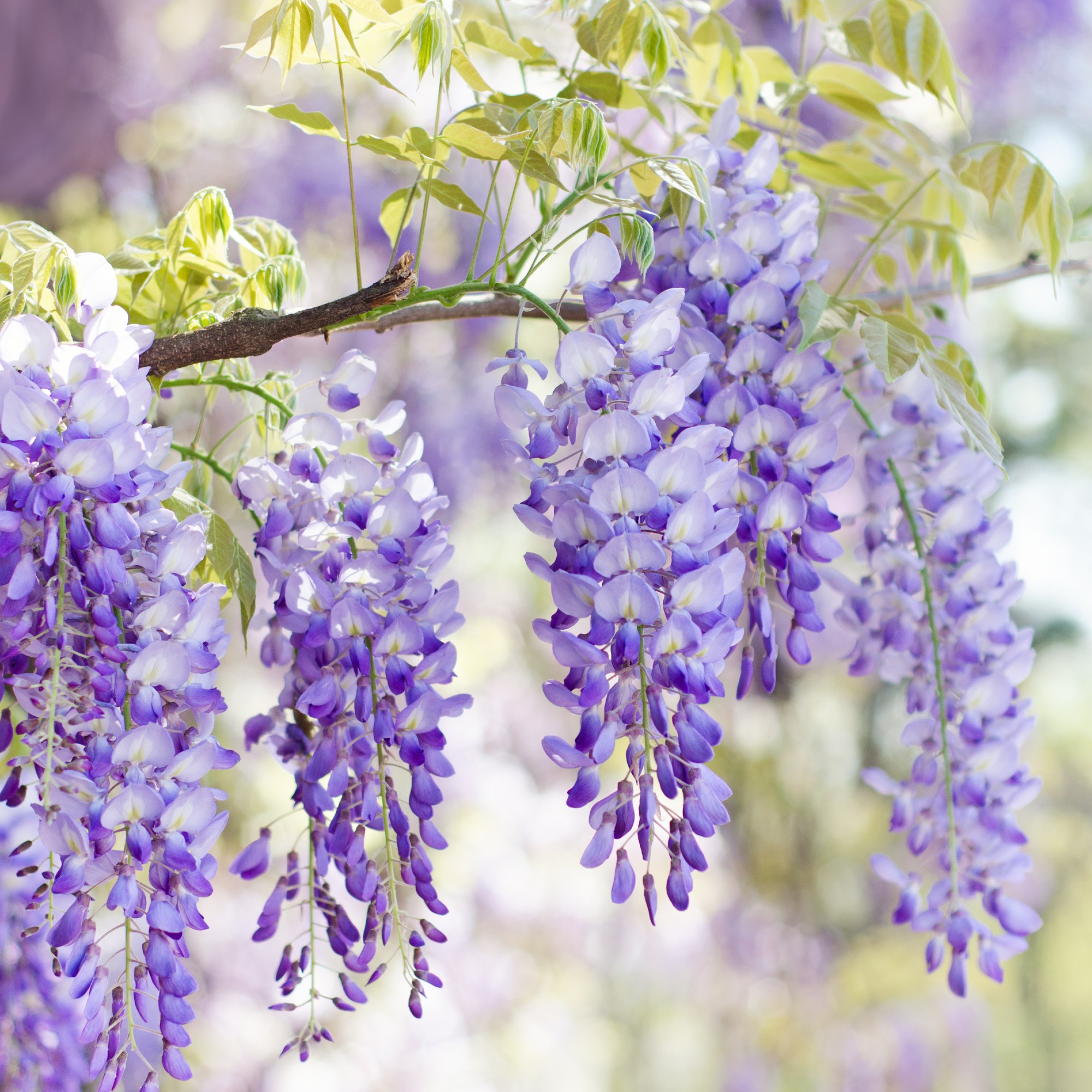Shears down! Experts explain why you shouldn't be pruning your wisteria just yet
Hold off on that prune if you want to keep your wisteria happy


Just like most plants and other vigorously growing climbers, wisteria too needs regular pruning to keep it healthy and in control. But in order to do that without causing more damage than good, you need to know when to prune wisteria.
Getting the when right is just as important as nailing how to prune wisteria. Especially since it is recommended to do it not once, but twice a year.
But before you get overly excited about trimming things back, don’t rush into anything – because now is not the time for wisteria pruning, according to gardening experts. But once the times do come, you’ll be ready to go with our easy and quick guide about when to prune wisteria.

When to prune wisteria
Wisteria plants need to be pruned twice a year – once in the winter and once in the summer. So you’ll need to learn when exactly to winter prune wisteria, as well as summer prune it.
‘Wisteria needs to be regularly pruned to keep its growth and size in control, and it will also help to improve the flowering display of the plant,’ says John Clifford, gardening expert at Gardenstone. ‘It is best to prune wisteria at least twice a year, once in July or August, and then again in January or February.’

John Clifford is a director of Gardenstone, a leading garden landscaping retailer based in the UK. With over 30 years in the gardening industry and continual work alongside The National Trust, John has amassed an extensive range of gardening and planting knowledge. Alongside his younger son, John has built a strong reputation for Gardenstone as a trusted source for both high-quality garden products and expert gardening advice.

‘To encourage flowering, wisterias should be pruned twice a year – once in late winter whilst the plant is in its dormant stage and once in late summer once flowering is over to tidy the climber’s shape, improve airflow around the plant and to allow sunlight to ripen next year’s flowering wood,' explains Jamie Shipley, gardening expert and managing director of Hedges Direct
‘Pruning in the final months of winter - January or February - helps the plant to concentrate its energy reserves on producing beautiful blooms in the spring, rather than wasting energy on overgrown foliage. Pruning during the wisteria’s dormant stage when the leaves have dropped will make it easier for you to see clearly what needs to be removed.'
Sign up to our newsletter for style inspiration, real homes, project and garden advice and shopping know-how
What you’ll need
- Heavy-duty hand pruners like these Mijova ones at Amazon
- Loppers like these Spear & Jackson ones at Amazon – ‘You may also want to have a pair of loppers or a pruning saw close to hand for older plants that may have thicker, more woody branches,’ John says.
- Gardening gloves like these ones at Homebase to protect your hands
- A ladder like this one at Amazon as wisteria is a climbing plant that can grow rather tall

When not to prune wisteria
Just like there are times when to plant wisteria, there are times of the year you definitely shouldn’t prune it as it might damage your plant.
‘Whilst pruning in January or February gives the wisteria plenty of time to concentrate energy on growing flowers, pruning any later than this when the plant is active means you run the risk of your wisteria not blooming, especially if too many established buds are removed,’ Jamie says.
‘You obviously should never prune your wisteria whilst it’s in full bloom – even if you only plan to remove dead or dying stems you could accidently remove flowers,’ he adds.
So that rules out spring, as well as early winter as far as pruning wisteria goes as the former comes with a risk of accidentally removing buds or flowers and the latter could leave the plant open to the risk of frost damage.

FAQs
Can I cut wisteria back hard?
Due to its vigorous growth, wisteria benefits from a hard prune, as long as it’s done correctly, of course.
‘Wisteria responds well to a hard prune to control its unruly and vigorous growth and stimulate new growth. I recommend keeping your hardest prune for the winter window when the plant is dormant to avoid damage,’ says Jamie Shipley, gardening expert and managing director of Hedges Direct.
‘Older wisteria plants may need to be hard pruned to get rid of old, tired growth, as well as any branches that are beginning to obstruct windows or protrude outwards from the building,' adds John Clifford, gardening expert at Gardenstone.

Can you prune wisteria too much?
As wisteria is one of the plants that increase a property’s value, not to mention it will certainly beautify it, you wouldn’t want to prune it too much and be left with a damaged, unhealthy plant. So can you prune wisteria too much?
‘Although wisteria responds well to hard pruning in the correct windows, there is such a thing as over-pruning,' warns Jamie Shipley, gardening expert and managing director of Hedges Direct. 'You run the risk of removing too many buds which will impact next year’s flowering and you could even damage your plants by putting stress on the system to repair pruning cuts – making it more susceptible to disease and pests and affecting overall healthy growth.’
‘To avoid over-pruning stick to the two windows and to the rule of the four D's in mind: dead, diseased, damaged, or dying. Aim to strike a balance between removing unwanted growth and encouraging growth.'
So wait until late summer for your next wisteria pruning session and your plant will thank you for it with its healthy growth.

Sara Hesikova has been a Content Editor at Ideal Home since June 2024, starting at the title as a News Writer in July 2023. She is now also the Ideal Home Certified Expert in Training on Furniture, and so far has tested over 150 different sofas.
Graduating from London College of Fashion with a bachelor’s degree in fashion journalism in 2016, she got her start in niche fashion and lifestyle magazines like Glass and Alvar as a writer and editor before making the leap into interiors, working with the likes of 91 Magazine and copywriting for luxury bed linen brand Yves Delorme among others.